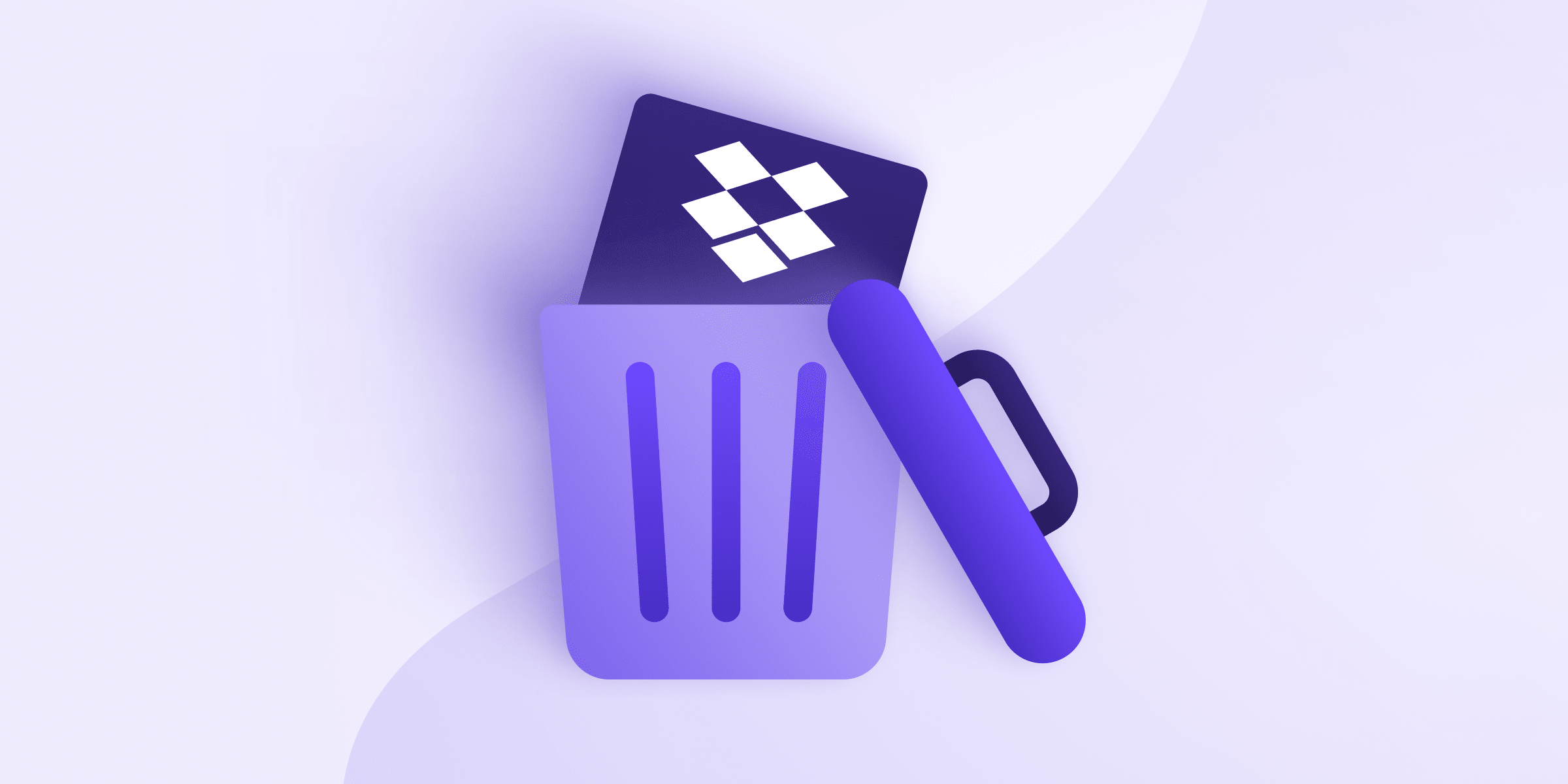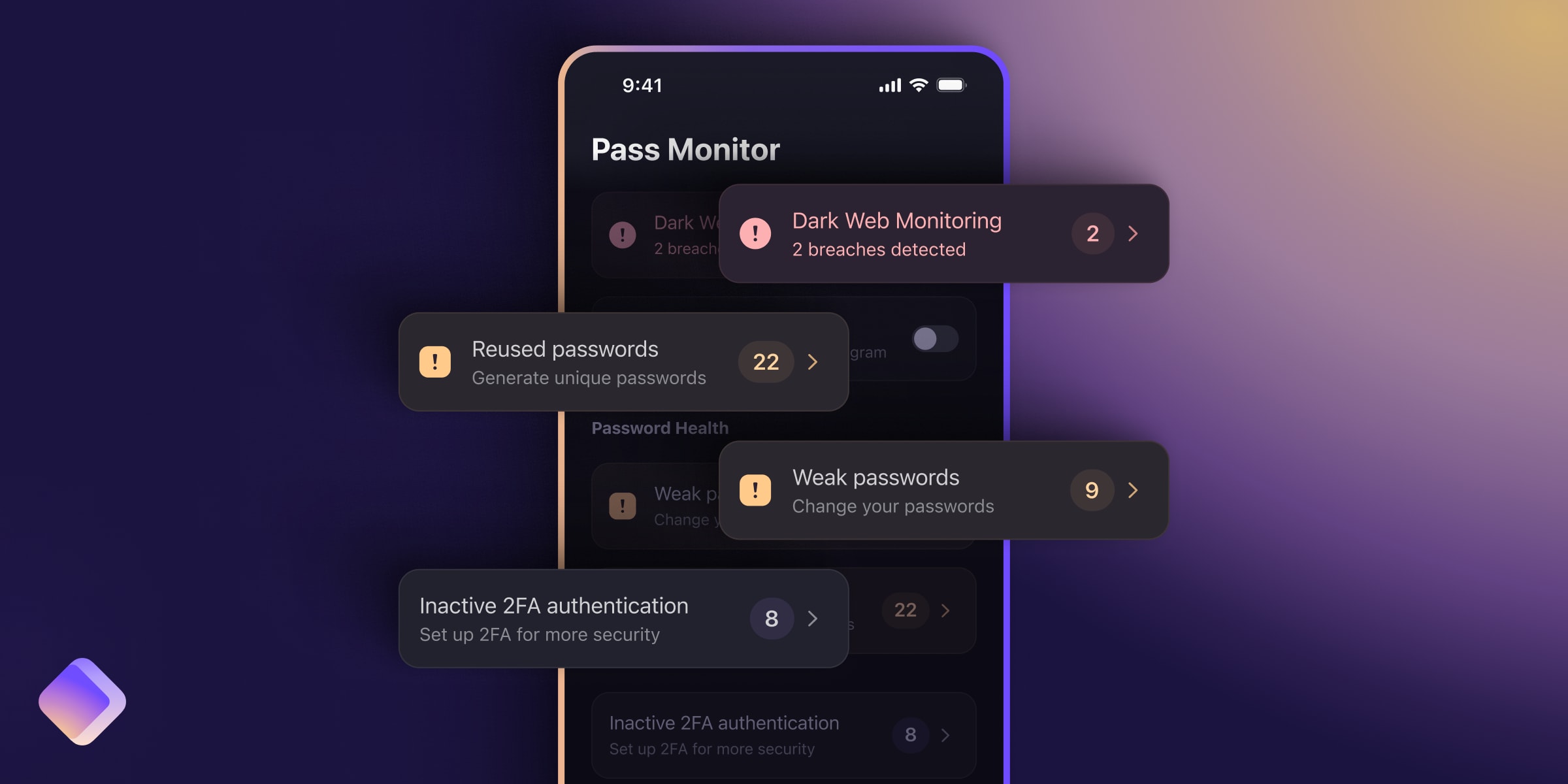Dropbox may have been the first mainstream cloud storage provider, but it’s no longer the best. It has a history of issues, from bugs in the interface to serious privacy and security problems. If you’re ready to switch providers, below we have instructions on how you can delete your Dropbox account in just a few steps.
Once your data is off the Dropbox servers, we’ll show you how to easily store it on a more secure platform — our end-to-end encrypted alternative called Proton Drive.
Why you may want to delete Dropbox
Dropbox was quite a hit when it came out. No longer did you have the hassle of USB sticks or other physical media; you could just upload files to the cloud, and your friends, colleagues, and family could just download it from there.
But within a few years Dropbox had issues with security and tried to cover it up. The worst was a breach(new window) in 2012 that resulted in revealing the user details of 68 million people, but which wasn’t made public until 2016. There were also multiple(new window) issues(new window) with bugs, and allegations(new window) by Edward Snowden that Dropbox worked with the NSA’s infamous PRISM project. Also, as a US-based company, Dropbox is required to cooperate with law enforcement(new window) any time it’s asked.
It’s not just scandals like this that show Dropbox is not secure. There are serious drawbacks to the system’s architecture. These include a lack of end-to-end encryption, which means Dropbox can see your files any time they want to. It also means it’s easier for attackers to breach Dropbox security — as we saw in 2012.
Additionally, from a user perspective, the interface feels dated, and there is a lack of features on the free plan — many file-sharing options, like setting passwords and expiry dates — aren’t free, for example. It’s clear there are better options. Before you switch to a new provider, though, you’ll want to first delete your Dropbox account.
How to delete a Dropbox account
One thing Dropbox gets right is that it makes it very easy to delete your account. By doing so you automatically destroy all data irrevocably. That’s great for your peace of mind, but make sure you download any files you may want to keep before committing — simply select any files or folders you want to keep and click on Download.

With that taken care of, it’s time to delete your Dropbox account. First, log in and on the main screen, click on your avatar in the top right corner; it’s either a picture of you or your initials. A menu will pop out. Click Settings.

Scroll down to the bottom of the page and find an entry called Delete account. To the right is an underlined text saying the same. Select it.

On the next screen you’ll be asked to enter your password and select a reason why you want to delete your account. Answer (or not) and then select Permanently delete at the bottom.

Dropbox will immediately destroy your files and delete your account.
What to use instead of Dropbox
Naturally, this leaves you with the question of what to use instead of Dropbox. This is where Proton Drive comes in. Unlike other cloud storage providers, all of our products are built with your privacy as the top priority. No matter if it’s Proton Mail, Proton VPN(new window), or Proton Pass, our services come with end-to-end encryption built in.
We can do this because, unlike services like Dropbox or even Google Drive, we’re entirely funded by our community. As a result, we’re not beholden to shareholders or advertisers. Also, because we’re based in Switzerland, we cannot turn over your data unless ordered to do so by a Swiss court, which must adhere to strong privacy laws.
Proton Drive offers all the features you could want from a cloud storage service in the free plan, so no need to pay extra just to send a file to a friend. Not only can you share files, you can set expiration dates and password protect your sharing links. Naturally, Proton Drive also offers sync, meaning you can use it to back up any vital files on your hard drive to the cloud automatically.
Switching to Proton Drive is easy. Once you’ve downloaded your files from Dropbox, you can upload them to Proton Drive just by dragging and dropping them into your account while logged in on the web app. We have a full guide on how to use Proton Drive to help you get started.
If you’re interested in seeing what online privacy looks like, create a free Proton account today and join us in our fight for a better internet. Your Proton Drive account comes with 1GB for free to get you started.














